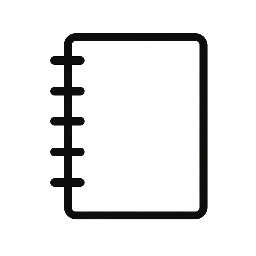
Drain cleaning is essential to maintaining a functional plumbing system and preventing costly blockages. It involves removing buildup, debris, and clogs that obstruct the flow of water in pipes. Regular drain cleaning helps avoid slow drains, unpleasant odors, and potential water damage.
Many factors cause drains to clog, including grease, hair, soap, and foreign objects. Knowing how to clean drains effectively can save time and reduce the need for professional plumbing services. Proper maintenance extends the life of pipes and keeps a home’s plumbing running smoothly.
People often overlook or delay drain cleaning until noticeable problems arise. Understanding the importance of routine cleaning encourages proactive care, which prevents serious plumbing issues before they start.
Understanding Drain Cleaning
Drain cleaning involves removing blockages from pipes to restore proper water flow. It addresses specific causes of clogs, targets particular types of drains, and identifies clear signs that signal the need for maintenance.
Common Causes of Clogged Drains
Blocked drains most often result from the buildup of grease, soap scum, hair, and food particles. Grease hardens inside pipes, creating resistant layers that catch debris. Hair tends to form tangles, especially in bathroom drains, trapping soap and other particles.
Foreign objects like small toys, excessive toilet paper, or mineral deposits from hard water also cause obstructions. Tree roots penetrating underground pipes can lead to serious blockages and pipe damage. Regular use and improper disposal habits significantly increase clog risk.
Types of Drains Requiring Cleaning
Kitchen, bathroom, and floor drains frequently need cleaning due to constant exposure to different waste types. Kitchen drains accumulate grease, food scraps, and oils that cause slow drainage and odors.
Bathroom drains collect hair, soap scum, and toothpaste residue. Floor drains in basements or commercial spaces can fill with dirt, leaves, and sediment. Each drain type requires appropriate cleaning methods based on typical debris and usage patterns.
Signs Your Drain Needs Cleaning
Slow drainage is a primary sign requiring attention. Water pooling around sinks or showers indicates partial blockage. Unpleasant odors from drains often signal trapped organic matter decomposing inside pipes.
Gurgling sounds during water flow or frequent backups in toilets and sinks also suggest clogs. Sudden water backup after a single fixture use points to deeper or more serious blockages needing professional cleaning.
Drain Cleaning Methods and Maintenance
Drain cleaning involves various techniques to remove blockages and maintain smooth water flow. Proper methods depend on drain type, clog severity, and professional or DIY approaches. Maintaining drains requires consistent care and timely interventions.
Professional Drain Cleaning Techniques
Professionals use specialized tools like motorized drain snakes, hydro-jetters, and video inspection cameras. A motorized drain snake breaks up tough clogs and clears debris lodged deep inside pipes.
Hydro-jetting employs high-pressure water streams to scrub pipe walls and remove grease and mineral buildup. Video cameras help diagnose blockages, pipe damage, and locate the exact clog position.
These methods prevent damage to plumbing and avoid recurring clog issues. Professionals also handle complex drainage systems in commercial and residential properties, often applying chemical cleaners with controlled concentrations.
DIY Drain Cleaning Solutions
Simple clogs can be addressed using plunger plunges or manually operated drain snakes. Chemical drain cleaners are widely available but should be used sparingly due to potential pipe corrosion or environmental harm.
Homemade mixtures like baking soda and vinegar provide a safer, less abrasive cleaning method. Pour baking soda followed by vinegar down the drain, wait 15-30 minutes, then flush with hot water.
Regular removal of hair or food debris from visible traps prevents clog formation. Use strainers over drains to catch particles and avoid pouring grease or coffee grounds into drains.
Preventative Practices for Clear Drains
Routine maintenance extends drain lifespan and reduces unexpected blockages. Flushing drains monthly with boiling water helps dissolve fats and soap scum.
Avoid disposing of fibrous or starchy waste in sinks. Encouraging regular professional inspections every 1-2 years can identify early pipe degradation or slow drainage.
Installing traps and strainers in sinks and showers reduces solid buildup. Educating household members on proper waste disposal habits supports drain health.

Leave a Reply